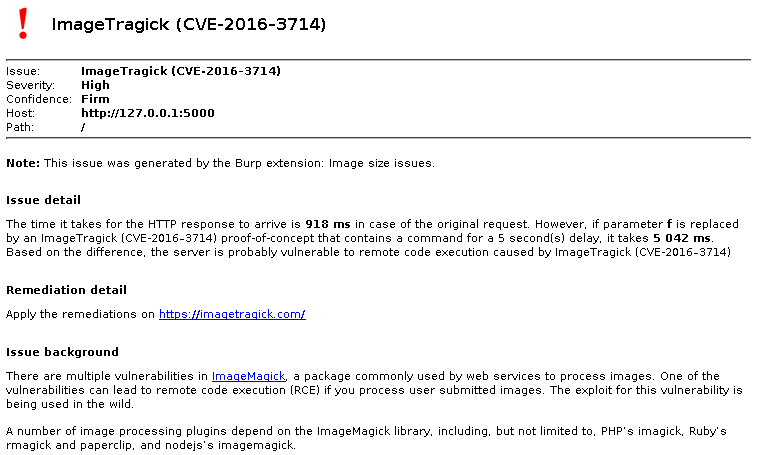
Detecting ImageTragick with Burp Suite Pro
After ImageTragick (CVE-2016–3714) was published, we immediately started thinking about detecting it with Burp, which we usually use for web application testing. Although collaborator would be a perfect fit, as image processing can happen out-of-band, there’s no official way to tap into that functionality from an extension.
The next best thing is timing, where we try to detect remote code execution by injecting the sleep command which delays execution for a specified amount of seconds. By measuring the time it takes to serve a response without and the with the injected content, the difference tells us whether the code actually got executed by the server.
We used rce1.jpg from the ImageTragick PoC collection and modified it to fit our needs. By calling System.nanoTime() before and after the requests and subtracting the values, the time it took for the server to respond could be measured precisely.
Since we already had a Burp extension for image-related issues, this was modified to include an active scan option that detects ImageTragick. The JPEG/PNG/GIF detection part was reused so that it could detect if any parameters contain images, and if so, it replaces each (one at a time) with the modified rce1.jpg payload. The code was released as v0.3 and can be downloaded either in source format (under MIT license) or a compiled JAR for easier usage. Below is an example of a successful detection:

Header image © Tomas Castelazo, www.tomascastelazo.com / Wikimedia Commons / CC-BY-SA-3.0